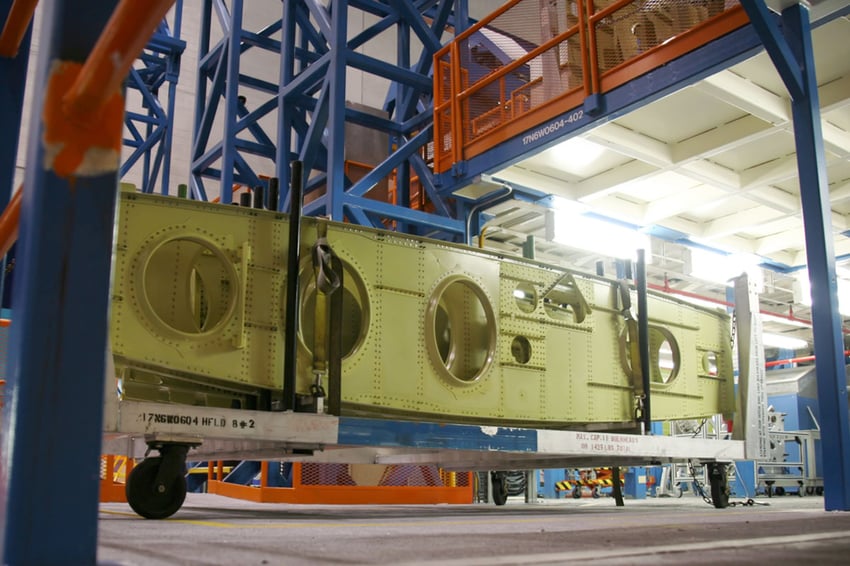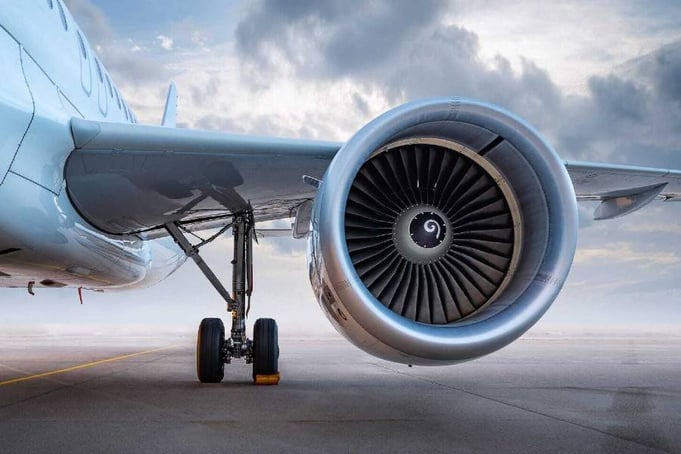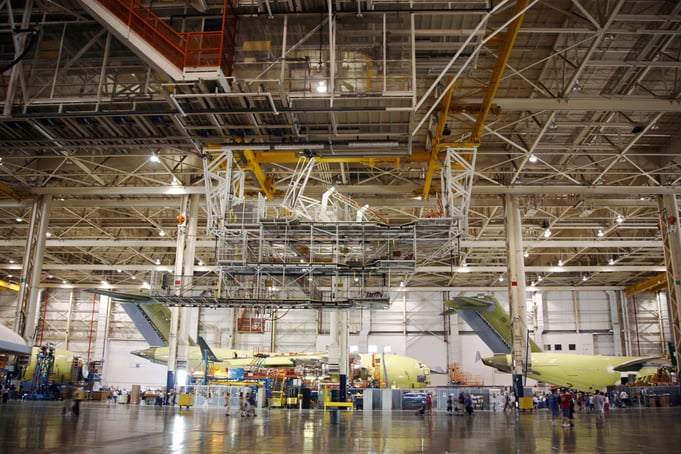How to Safely Move Aerospace Manufacturing Tooling and Jigs

Loads within aerospace manufacturing environments are heavy, usually exceeding weights of 3,000kg and often weighing up to as much as 30,000kg. Unsurprisingly, manufacturers face numerous challenges when moving a range of heavy parts and equipment within aerospace manufacturing facilities.
Heavy tooling, fixtures and jigs are just a few pieces of equipment that we’ve been tasked with moving with our industrial electric tugs.
Tooling, jigs, fixtures, and everything in between
A broad phrase, the term tooling encompasses anything specifically designed and constructed to aid in the manufacture of parts or sub-assemblies within the aerospace industry. Common tooling types where we’ve provided electric tugs to solve safety and positioning challenges include lay-up mould tools, assembly jigs and fixtures.
Material handling safety challenges
When it comes to aerospace material handling, the weight of heavy tooling presents a challenge in itself. Combine this with attributes such as high-value and sensitive loads, and a solution can sometimes feel difficult to find.
Common approaches to material handling
Often, aerospace tooling is placed on carts or dollies fitted with wheels in an attempt to make loads easier to move around a facility or through production processes. However, this often relies on the physical effort and exertion of staff. Without specialist aerospace handling equipment, the movement of heavy tooling tends to mirror one of the following approaches:
- Multiple members of production staff manually push, pull and steer heavy tooling, increasing the risk of injuries and staff fatigue.
- Factory staff have to manually steer the tooling while a forklift ‘shunts’ it into position. Not only is this time-consuming and potentially dangerous to employees, but it risks damaging expensive composite tooling.
A safer way – electric tugs
Manufacturers within the aerospace industry are under constant pressure to remove manual handling processes, and with more organisations opting for fork-free production areas, manufacturers need a safer solution that protects staff and keeps valuable tooling secure.
Precise, safe and controlled material handling
Electric tugs empower a single operator to move jigs, fixtures and tooling with complete control and ease. Operators can push, pull, and steer heavy tooling with zero physical effort, delivering a safe and precise handling solution for aerospace manufacturing facilities.
Whether you need a solution to move mould tools from the lay-up area into the autoclave or, a safer way to position assembly jigs, electric tugs provide a compact, safe solution.
Keeping production moving – efficiency benefits
Whilst there are clear safety benefits in using the correct material handling solution, aerospace manufacturers also need to consider efficiency.
Manufacturing processes need to be as efficient as possible, and any material handling equipment needs to support keeping production flowing – without compromising on safety.
Electric tugs and tows help drive efficiency in several ways:
- Electric tow tugs allow single operators to move heavy loads that would ordinarily have required multiple people if moved manually, freeing up staff to focus on value-adding operations in the manufacturing process.
- With a license-free operation, electric tugs also reduce the wasted time associated with waiting for a certified driver where loads were previously moved using forklift trucks.
- Lastly, given the flexibility of electric tugs, and their ability to handle even the heaviest of weights, electric tow tugs can be used across a whole variety of aerospace material handling applications.


